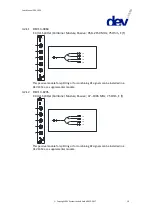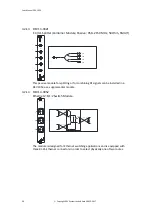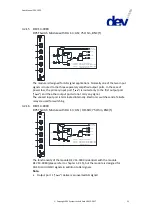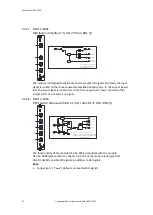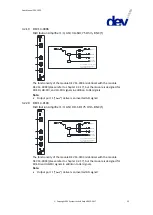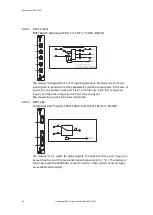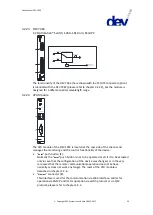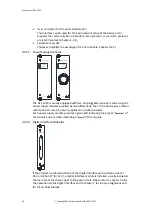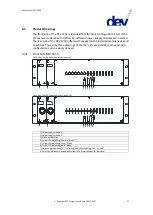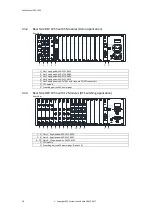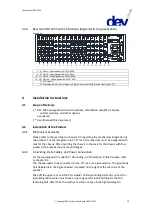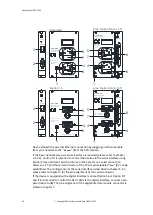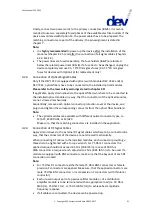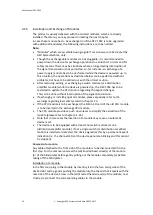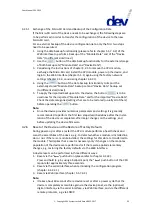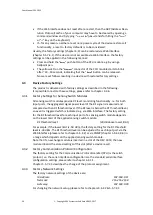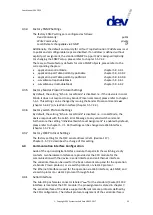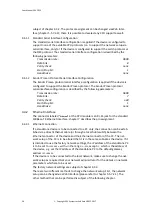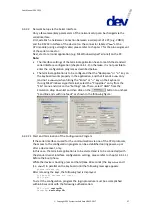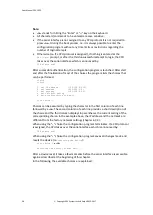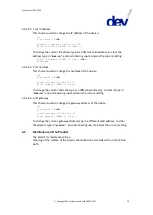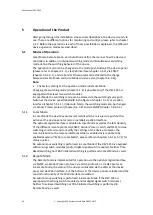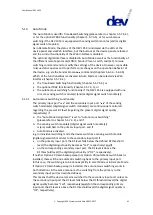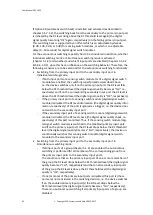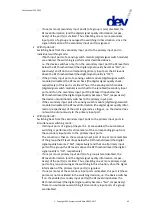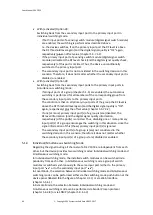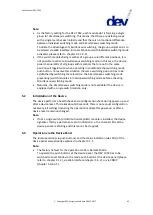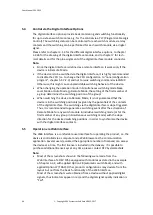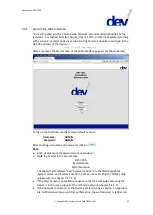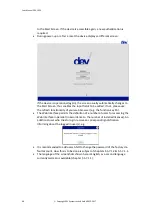
User Manual DEV 1953
Copyright DEV Systemtechnik GmbH 2015-2017
33
4.2.5.1
Exchange of the Micro-SD Card and Backup of the Configuration Data
If the Micro-SD card of the device needs to be exchanged, the following steps are
to be performed in order to transfer the configuration of the device to the new
Micro-SD card.
For an external backup of the device configuration data, only the first two steps
need to be executed:
1. Using the data backup functionality (please refer to chapter 5.5.7.4.2) of the
Web Interface to perform a backup of the "Module Data" and of the "Device
Data" (to different slots/lines!).
2. Use the
button of the data backup functionality for the external storage
of both backup sets ("Module Data" and "Device Data").
3. Considering the instructions of chapter 4.2.5 to remove the CPU module,
exchange the Micro-SD card, install the CPU module, power up the device, and
login to the Web Interface (chapter 5.5.1) again using the factory network
settings (chapter 4.3.3, considering chapter 4.4.2.1).
4. Using the
button of the data backup functionality to import the
externally stored "Module Data" backup set and "Device Data" backup set
(to different slots/lines!).
5. To apply the imported backup sets to the device, the button
is to be
used now for the imported "Module Data" and for the imported "Device Data".
Check the data categories/settings that are to be restored (usually all of them)
before operating the
button.
Note:
Since the device provides numerous parameters and settings it is generally
recommended to perform the first two steps described above after the instal-
lation of the device is completed, after major changes on the settings, and
before updating the device firmware.
4.2.6
Reset of the Device and the Restore of Factory Defaults
During power-up or after a restart the CPU module performs a health check and
scans the assemblies of the device, e.g. to detect whether a module is installed in a
slot or not. If there is a module installed, the settings for this slot are transferred to
the module. This implies that a reset is necessary only if changes on the modules
population of the device were performed or if there were applied elementary
changes, e.g. restoring the factory defaults via the Web Interface.
A device reset can be performed in three different ways:
1. Reset via the "
Reset
" push button (please refer to chapter 3.2.24):
Press and hold (e.g. by using a ballpoint pen) the "
Reset
" push button of the CPU
module for approximately three seconds.
2. Reset via the serial interface when terminating the configuration program
(chapter 4.4.2.2.1).
3. Reset via Web Interface (chapter 5.5.7.4.3).
Note:
It takes about 60 seconds after a device reset or after a power cycle that the
device is completely accessible again via the device panel, via the (optional)
digital interface, via the serial interface, via Web Interface, and via the different
remote protocols, e.g. via SNMP.

